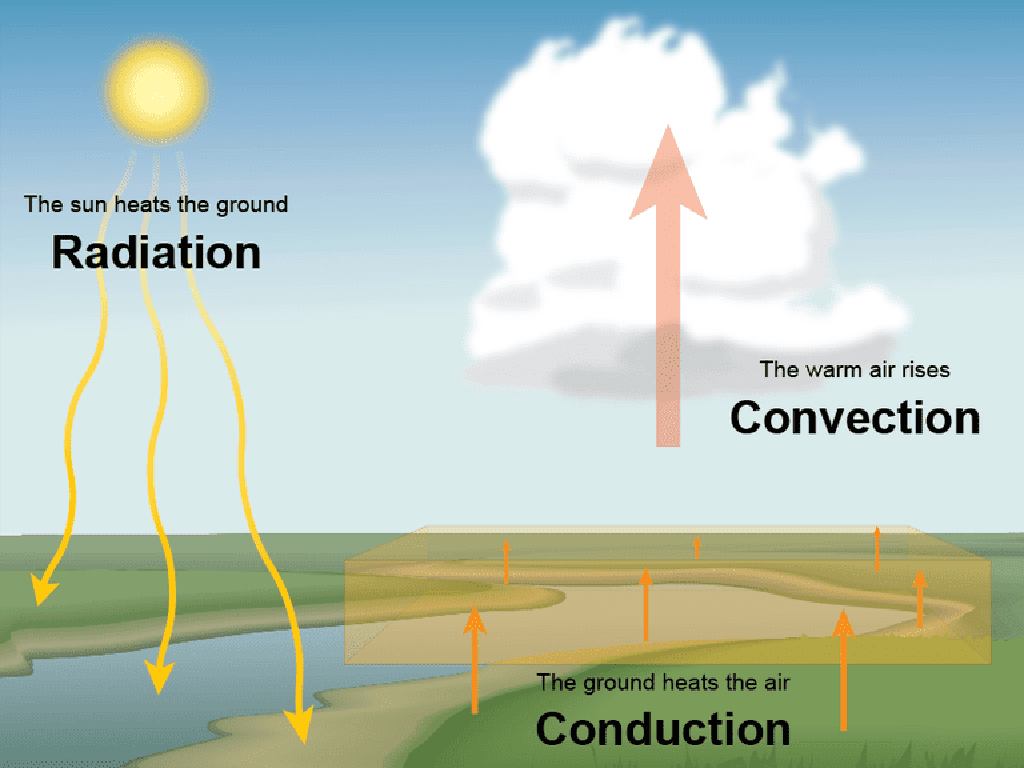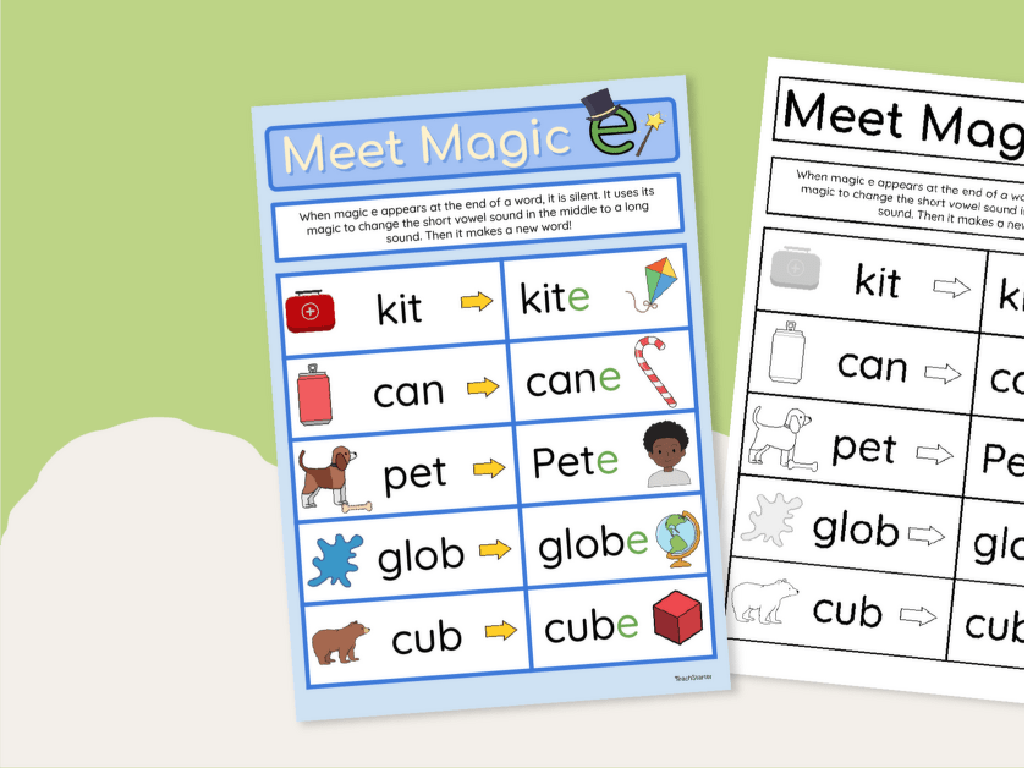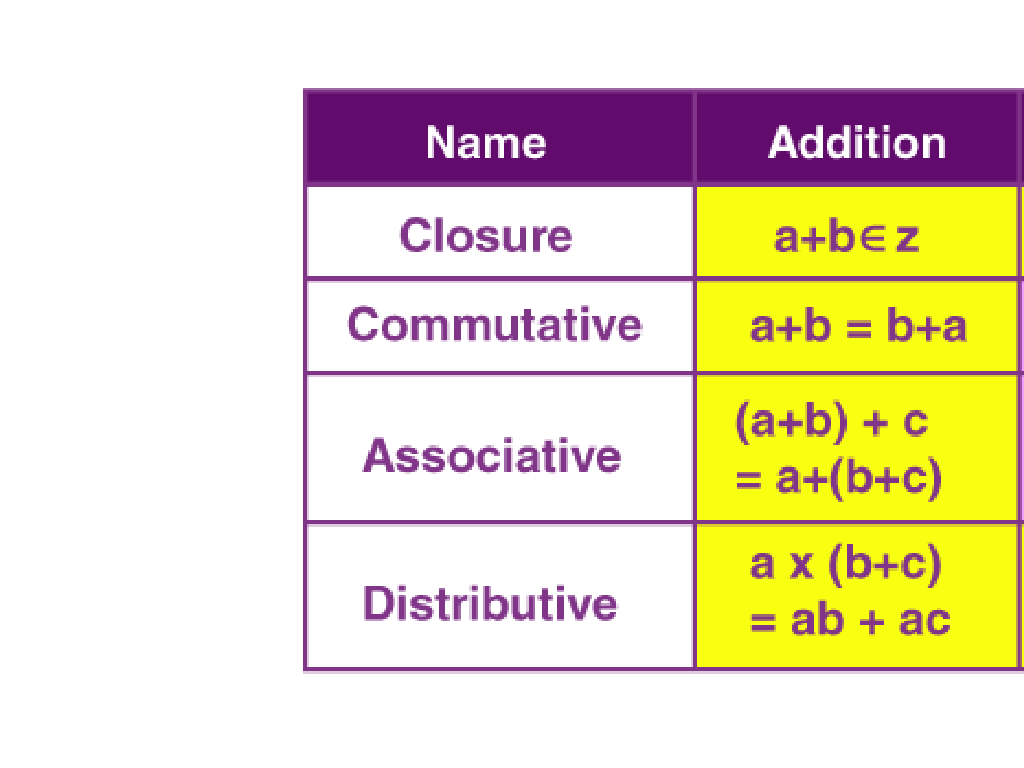Is The Word An Adjective Or Adverb?
Subject: Language arts
Grade: Sixth grade
Topic: Adjectives And Adverbs
Please LOG IN to download the presentation. Access is available to registered users only.
View More Content
Exploring Adjectives and Adverbs
– Welcome to Language Arts!
– Discover adjectives and adverbs
– Adjectives describe nouns, adverbs modify verbs
– Learn to identify them
– Adjectives answer ‘which?’, ‘how many?’, adverbs often end in ‘-ly’
– Using adjectives and adverbs correctly
– Place adjectives before nouns, adverbs near the verbs they modify
|
Begin the class with a warm welcome and an introduction to the day’s topic: adjectives and adverbs. Explain that adjectives are words that describe nouns, giving more information about things like color, size, and number. Adverbs, on the other hand, modify verbs, adjectives, or other adverbs, often telling us how, when, where, or to what extent an action is performed. Many adverbs end in ‘-ly’, but not all, so it’s important to understand their function rather than just their form. Provide examples and encourage students to think of their own. Discuss the placement of these words in a sentence, as it is crucial for proper grammar. The goal is for students to not only identify adjectives and adverbs but also to use them effectively in their writing.
Understanding Adjectives
– Adjectives describe nouns
– Words that give more information about nouns
– They detail person, place, or thing
– Specify qualities or quantities of nouns
– Examples: ‘happy’, ‘blue’, ‘tall’
– ‘Happy’ shows emotion, ‘blue’ indicates color, ‘tall’ refers to height
– ‘Five’ and ‘beautiful’ are also adjectives
– Numbers can be adjectives, ‘beautiful’ expresses a quality
|
This slide introduces the concept of adjectives to the students. Adjectives are words that modify or describe nouns, providing additional details about the noun’s appearance, quantity, condition, or size. It’s important to give students clear examples of adjectives and encourage them to think of adjectives as ‘describing words’ that add color and specificity to their writing. Have students practice identifying adjectives in sentences and encourage them to use adjectives in their own writing to make it more vivid and precise.
Understanding Adverbs
– Adverbs: Describing words
– Adverbs add detail to verbs and adjectives, like ‘run quickly’ or ‘very tall’.
– Adverbs answer how, when, where, why
– ‘How’ does something happen? ‘When’ did it occur? ‘Where’ is it happening? ‘Why’ is it happening? ‘To what extent’ is it true?
– Examples: ‘quickly’, ‘yesterday’
– ‘Quickly’ tells us how. ‘Yesterday’ tells us when. ‘Outside’ tells us where.
– Adverbs modify verbs, adjectives, adverbs
– ‘Very’ intensifies adjectives (very happy), ‘almost’ modifies adverbs (almost always).
|
This slide introduces the concept of adverbs to the students, explaining their role in a sentence as modifiers of verbs, adjectives, and other adverbs. Emphasize the different questions that adverbs can answer about the actions or descriptions they are modifying. Provide clear examples for each type of adverbial question. Encourage students to think of their own examples and to identify adverbs in sentences, focusing on the word’s function rather than just its form. This will help them understand that adverbs are not limited to words ending in ‘-ly’ and can vary in their placement within a sentence.
Identifying Adjectives in Sentences
– Spotting adjectives in a sentence
– Look for words that give more information about nouns
– Adjectives describe nouns
– Words like ‘small’, ‘blue’, ‘exciting’ describe nouns
– Practice with example sentences
– ‘The quick, brown fox jumps over the lazy dog’ – find adjectives
– Class activity: Find adjectives
|
This slide is aimed at helping students understand how to identify adjectives within sentences. Start by explaining that adjectives are words that describe or modify nouns, giving us more information about the object, person, place, or idea. Use clear examples to illustrate this point. Then, engage the class with a collaborative activity where they identify adjectives in provided sentences. Encourage participation and discuss why each chosen word is an adjective. For the class activity, have students work in pairs or small groups to find adjectives in sentences from a book or story they are familiar with. This will help reinforce their understanding of adjectives in a fun and interactive way.
Identifying Adverbs in Sentences
– Spotting adverbs in sentences
– Adverbs modify verbs, adjectives, or adverbs
– Look for words ending in ‘ly’, like ‘quickly’ or ‘happily’
– Examples of adverbs in use
– ‘She sang beautifully.’ – ‘beautifully’ modifies the verb ‘sang’
– Class activity: Find adverbs together
– We’ll review sentences as a class and identify adverbs
|
This slide is aimed at helping students understand how to identify adverbs within sentences. Emphasize that adverbs are words that modify verbs, adjectives, or other adverbs, often ending in ‘ly’. Provide clear examples to illustrate this point. For the class activity, prepare sentences in advance and ask students to find and highlight the adverbs. Discuss as a class why each highlighted word is an adverb, focusing on the word it modifies and how it changes the meaning of the sentence. This interactive approach will help reinforce the concept and ensure students can recognize adverbs in their reading and writing.
Adjective or Adverb: Understanding Their Roles
– Some words function as both
– Words like ‘fast’ can describe a noun or modify a verb
– Context determines their use
– Does it describe a ‘noun’ or modify a ‘verb’?
– Practice with interactive examples
– Engage with sentences to identify correct usage
– Test your knowledge in sentences
– We’ll review examples together in class
|
This slide is aimed at helping students understand that some words in English can serve as both adjectives and adverbs, and their function is determined by their use in a sentence. The key is to look at what the word is modifying; if it’s modifying a noun, it’s acting as an adjective, and if it’s modifying a verb, it’s an adverb. Provide interactive examples where students can apply this knowledge, such as sentences where they have to identify whether the word in question is an adjective or an adverb. This activity will reinforce their understanding and help them distinguish between the two in various contexts. Encourage participation and make sure to clarify any doubts during the review.
Adjectives vs. Adverbs: Rules and Exceptions
– Forming adverbs with ‘-ly’
– Add ‘-ly’ to an adjective to make an adverb, e.g., ‘quick’ becomes ‘quickly’.
– Not all ‘-ly’ words are adverbs
– Words like ‘friendly’ and ‘lovely’ end in ‘-ly’ but are adjectives.
– Exceptions in adverb forms
– Some adverbs don’t follow the ‘-ly’ rule, like ‘well’ from ‘good’.
– Irregular adverbs to remember
– ‘Fast’ and ‘hard’ are the same as adjectives and adverbs.
|
This slide aims to clarify the difference between adjectives and adverbs, focusing on the common rule of adding ‘-ly’ to form adverbs and the exceptions to this rule. Emphasize that while many adverbs end in ‘-ly’, not all words with this ending are adverbs; some are adjectives. Highlight irregular adverbs that do not follow the ‘-ly’ pattern and note that some words can be both adjectives and adverbs without any change in form. Provide examples for each point to ensure understanding. Encourage students to think of additional examples and to be mindful of these rules when identifying adverbs and adjectives in sentences.
Class Activity: Adjective and Adverb Hunt
– Read a short story as a class
– List adjectives and adverbs found
– Look for words that describe nouns and pronouns
– Explain your classifications
– Adjectives describe things, adverbs describe actions
– Share findings with the class
|
This activity is designed to help students practice identifying adjectives and adverbs within the context of reading. Provide a short story that is appropriate for sixth graders, ensuring it contains a good mix of descriptive words. As students read, they should make a list of words they believe are adjectives or adverbs. Encourage them to think about whether the word is describing a noun (adjective) or a verb (adverb). After listing, students should explain their reasoning for each word they’ve classified. This can be done in small groups or as a whole class discussion. Possible activities include: 1) Students highlight adjectives and adverbs in different colors, 2) Create a chart on the board for students to add words to, 3) Pair students to discuss their findings before sharing, 4) Have a competition to see which group can find the most adjectives and adverbs.
Lesson Summary & Homework
– Recap: Adjectives vs. Adverbs
– Adjectives describe nouns, adverbs modify verbs, adjectives, and other adverbs.
– Homework: Craft 10 sentences
– Create sentences using both adjectives and adverbs.
– Use adjectives and adverbs correctly
– Ensure each sentence demonstrates the correct use of adjectives and adverbs.
– Share your work next class
|
As we conclude today’s lesson on adjectives and adverbs, remind students of the key differences: adjectives describe nouns and pronouns, while adverbs modify verbs, adjectives, and other adverbs. For homework, students should write ten sentences that correctly use adjectives and adverbs. Encourage creativity and the use of new vocabulary. In the next class, students will have the opportunity to share their sentences, which will help reinforce their understanding of the lesson. Provide examples to clarify any confusion and offer guidance on how to distinguish between adjectives and adverbs in their sentences.






